Scotland Performs Update
Scottish Government performance information
Local Government and Communities Committee
Scorecard
The following National Performance Framework indicators have been selected as relevant to the Local Government and Communities Committee for the purposes of the Draft Budget Consultation Period.
The report overleaf shows recent performance on these indicators as at 14 December 2017.
The hyperlinks take you to the Scotland Performs website for the latest information on each indicator.
Performance Improving
Increase the number of businesses
Improve digital infrastructure
Improve children’s services
Reduce crime victimisation rates
Improve access to suitable housing options for those in housing need
Performance Maintaining
Reduce traffic congestion
Increase the proportion of pre-school centres receiving positive inspection reports
Increase the proportion of schools receiving positive inspection reports
Increase the proportion of young people in learning, training or work
Increase physical activity
Improve end of life care
Improve support for people with care needs
Reduce the number of individuals with problem drug use
Reduce reconviction rates
Improve people’s perceptions of the quality of public services
Improve the responsiveness of public services
Reduce children’s deprivation
Increase the number of new homes
Improve people’s perceptions of their neighbourhood
Increase cultural engagement
Improve the state of Scotland’s historic sites
Improve access to local greenspace
Reduce Scotland’s carbon footprint
Increase the proportion of journeys to work by public or active transport
Performance Worsening
Improve the skill profile of the population
Improve levels of educational attainment
Improve people’s perceptions about the crime rate in their area
Reduce deaths on Scotland’s roads
Reduce the proportion of individuals living in poverty
Performance Improving

The number of businesses per 10,000 adults has increased over recent years and is now at a series high level.
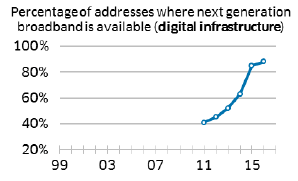
Next generation broadband was available at more premises in 2015 than in the previous four years.
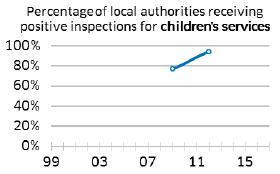
More local authorities received positive evaluations in child protection inspections in the latest period (2009-2012) than in the previous period (2006-2009).
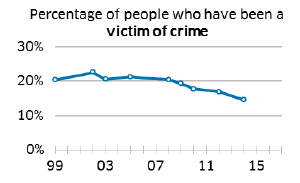
The percentage of people who have been a victim of crime remains on a downward trend.

Since December 2012, all unintentionally homeless households have been entitled to settled accommodation.
Performance Maintaining
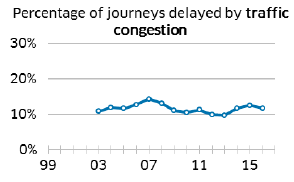
Journeys perceived to have been delayed due to traffic congestion fluctuated between 2007 and 2016.
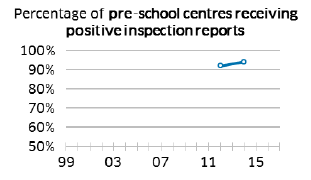
The first post-baseline sample shows that the same high percentages of pre-school centres received positive inspection reports as in the baseline year.
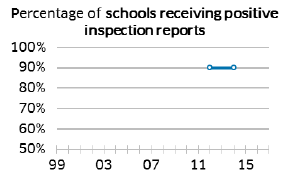
The first post-baseline sample shows that the same high percentages of schools received positive inspection reports as in the baseline year.
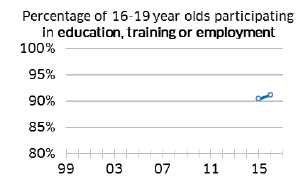
The percentage of 16-19 year olds participating in education, training or employment increased between 2015/16 and 2016/17.
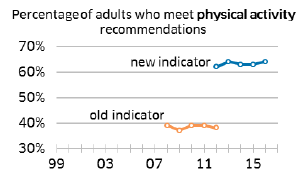
The proportion of adults meeting physical activity guidelines has been stable since 2012. Using the old guidelines, the proportion of adults meeting the recommendations was also stable between 2008 and 2012.

Consistently since 2010/11, just over 85% of the last six months of life have been spent at home or in a community setting. In 2010/11, there was a change to how the indicator was calculated.
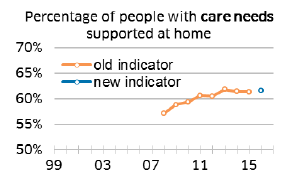
The percentage of people receiving personal care at home, rather than in a care home or hospital, remained stable in 2016.
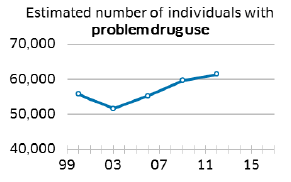
The estimated number of individuals with problem drug use increased between 2006 and 2012 although recent increases are small and not statistically significant.
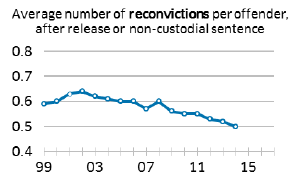
Average reconvictions per offender remained broadly stable between 2013- 14 and 2014-15. However, this continues to follow a long term downward trend.
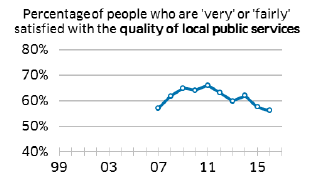
The percentage of people who are 'very' or 'fairly' satisfied with local public services remained stable between 2015 and 2016, having decreased since 2011.
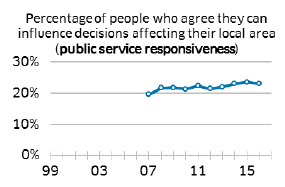
The percentage of people who agree that they can influence decisions affecting their local area has increased since 2007.
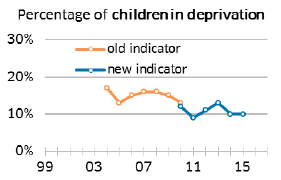
The percentage of children living in material deprivation remained stable between 2014/15 and 2015/16. In 2010/11, there was a change to the questions asked in the survey.

New housing supply remained stable in 2016-17, after increasing since 2012-13. This follows a significant decline between 2007-08 and 2012-13. The downward trend in these earlier years was due to a fall in private rather than social housing.
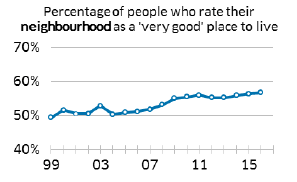
The percentage of people who rated their neighbourhood as a ‘very good’ place to live increased between 2006 and 2011, but has remained stable since.

The percentage of adults who engaged in a cultural activity remained stable between 2012 and 2016. The survey question was changed in 2012. Previously the percentage had remained fairly stable since 2007.
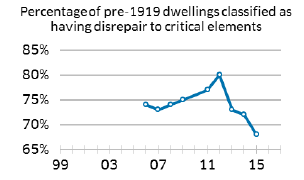
The percentage of pre-1919 dwellings classified as having disrepair to critical elements has remained on a downward trend since 2012.
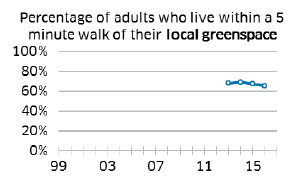
The percentage of adults who live within a five minute walk of their local greenspace remained stable in 2016.

Scotland’s carbon footprint has remained stable since 2011, following a declining trend since the peak in 2007.
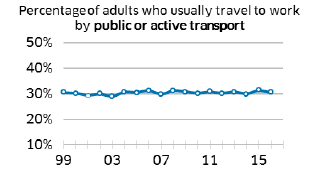
The proportion of adults who usually travel to work by public or active transport has remained stable for the last decade.
Performance Worsening
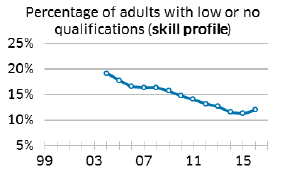
The percentage of the working age population with low or no qualifications has steadily declined since 2004, despite the increase in 2016.
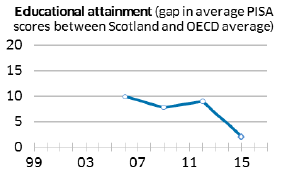
Scotland's educational performance has fallen to 2 points above the OECD average in 2015. This is due to declines in Scottish performance in Science and Reading.
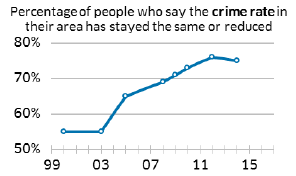
The percentage of people who perceive crime to have stayed the same or reduced in their area decreased in 2014/15. However, this number has risen continuously since 2003.
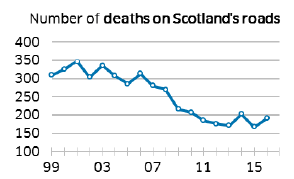
The number of people killed on Scotland’s roads has fluctuated in recent years. However, this continues to follow a long term downward trend.

The proportion of people living in relative poverty increased in 2015/16 and has fluctuated since 2009/10.
Contact
There is a problem
Thanks for your feedback